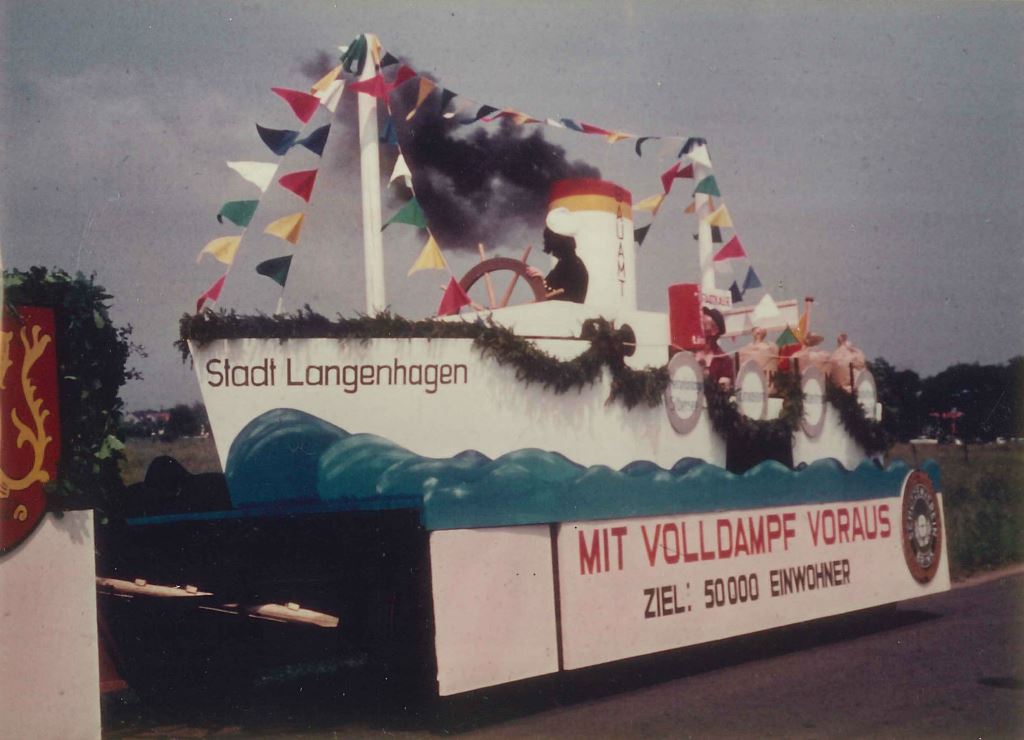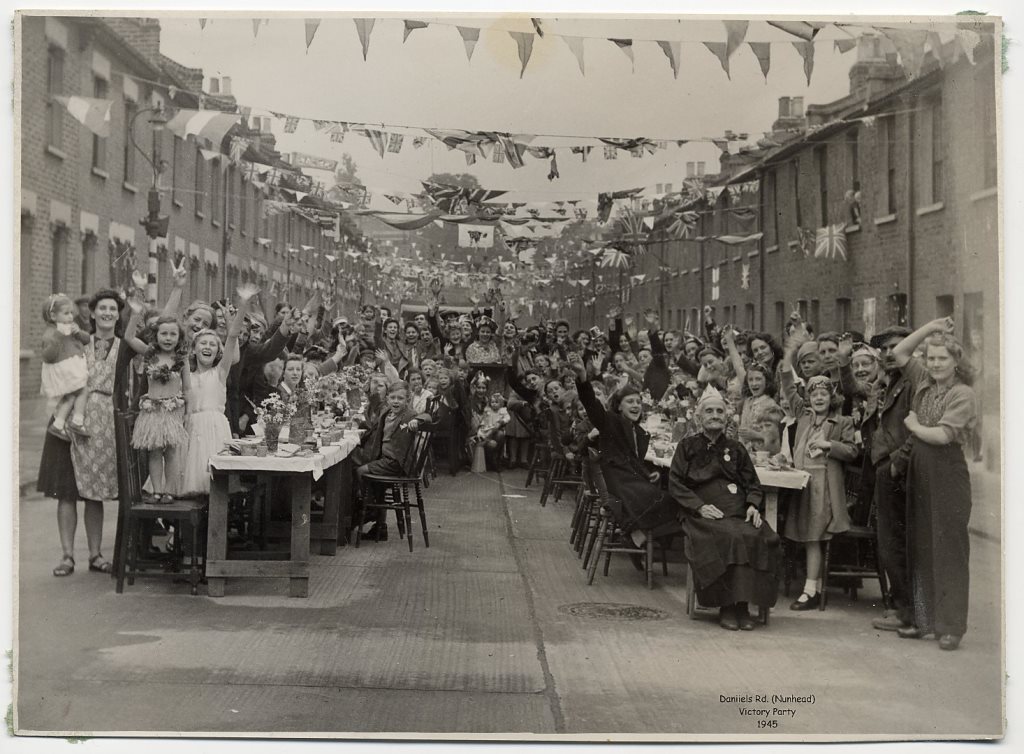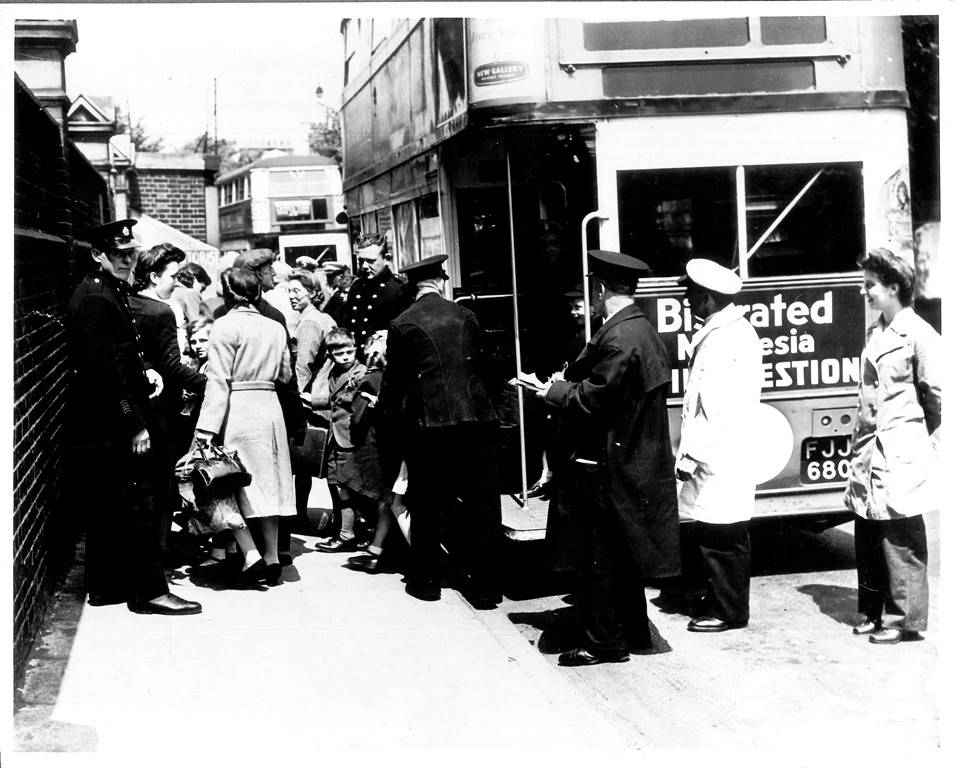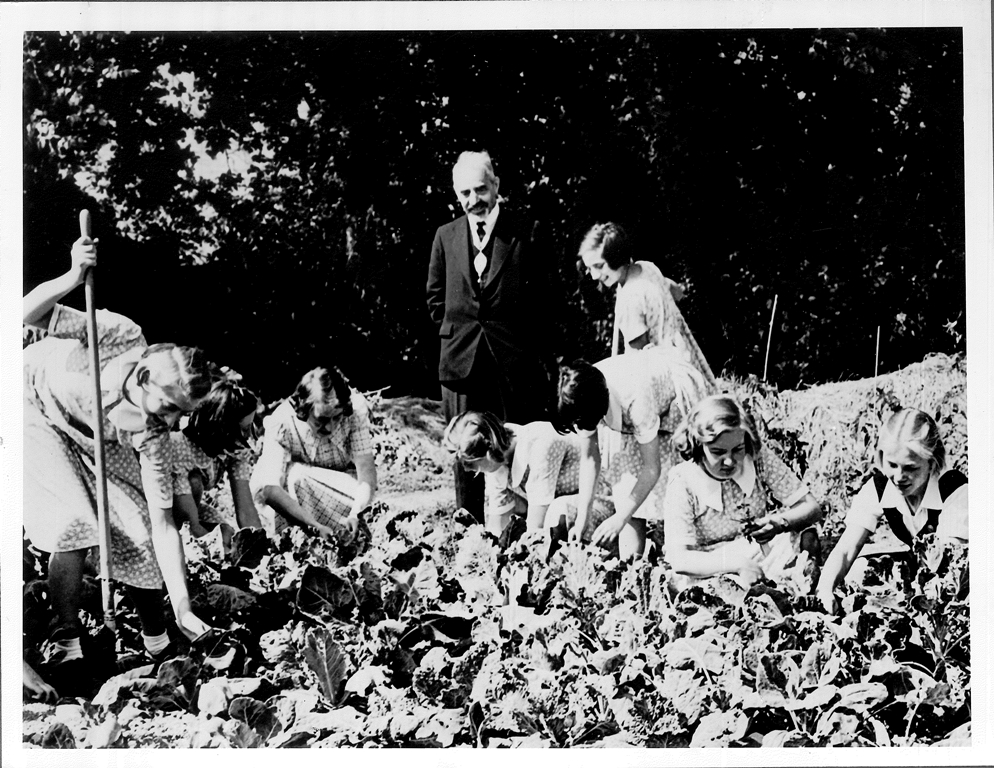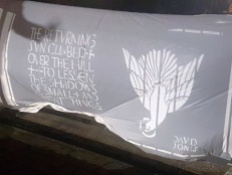By Patricia Dark, Archivist
Southwark Archives documents a particularly fascinating set of connections between the borough (or parts of the modern borough) and its twin towns. Town twinning intends to foster inter-cultural understanding, boost business, trade, and tourism, and – in many cases – foster understanding and reconciliation in the aftermath of war. In previous decades, when international travel was expensive and much more difficult to arrange than today, twinning provided an easy and cost-effective way for Southwark locals to experience other countries.
1783
Southwark’s international connections start early with the shipwreck of the East India Company ship Antelope, captained by Rotherhithe local Henry Wilson,in July 1783. Antelope wrecked on Ulong Island in the modern nation of Palau; locals assisted the crew in building a new ship, a process that took three months. When Wilson set sail for home, the High Chief, Ibedul, asked Wilson to take his eldest son, Lee Boo, back to London to acquaint him with European life. The “Black Prince”, living in Rotherhithe with the Wilson family, quickly became well-known for his intelligence, charm, and poise. However, he died of smallpox in in late December 1784, just six months after arriving in London, and was buried in the Wilson family tomb in St Mary’s churchyard. The nation of Palau has never forgotten their prince – athletes competing in the 2012 Olympics made a point of stopping at his gravesite.
1906
Probably the earliest governmental connection came in 1906; as part of the entente cordiale with France, a delegation from the French towns of Dunkirk and Malo-les-Bains visited the metropolitan borough of Bermondsey: a programme and menu from this visit are in the archive’s collections.
1922
After the First World War, the British League of Help tried to support the civilian populations living in the war zone by encouraging British communities to “adopt” Belgian and French counterparts located where local units saw particularly fierce action. For Cambrin, a village in the Pas-de-Calais, 18 miles southwest of Lille, their adoptee was the metropolitan borough of Southwark, whose local TA unit (the 24th battalion of the London Regiment) saw a significant number of casualties saw a significant number of casualties there. Council minutes from 1922 note that Southwark was poor and not able “…to do much financially, but it appears to us that it is not so much the amount or the value of the gift or gifts that matters, but rather the spirit in which they are offered. The real point of an adoption is that sympathy is expressed for France…”; the borough’s sympathy saw £67 (6,000 francs) and seeds worth another £200 donated to help. Southwark’s mayor and town clerk delivered the gift in March 1923. During their stay, they visited a number of battlefields and war cemeteries; the mayor’s report appears in the council minutes in full – which suggests that the trip was made, in part, for all the widows and orphans who couldn’t go themselves.
The 1930s
Just before the Second World War, a suburb of Melbourne, Australia formally cemented links with its namesake: the metropolitan borough of Camberwell. A former resident of south London gave the Australian Camberwell its name in 1857 after noticing that his new pub was at the junction of 6 roads. During and after the Second World War, the Australians sent their cockney cousins 40,000 food parcels, which helped mitigate the effects of ever-tightening rationing (the town of Geelong West did the same for Bermondsey). To say thank you, in 1950 the Londoners gave the Australians the freedom of the British borough – as well as the bell from the blitz-destroyed Scarsdale Road school in Peckham, which was installed in Camberwell Central School in Victoria.
The 1940s
During the Second World War, Bermondsey – whose Labour council was radically progressive – made symbolic links with other embattled communities. In October 1941, local Boy Scouts and Girl Guides sent a message of solidarity to the youth of the Soviet Union – the archive has a copy. In June 1943, on the first anniversary of the total destruction of the Czechoslovak village of Lidice and massacre of its residents by the Nazis, Bermondsey held a memorial service on the site of the blitzed town hall in Spa Road; it featured a speech by Jan Masaryk, Foreign Minister in Exile, and a performance by a choir of Czechoslovak servicemen.
The 1950s
After the Second World War, twinning became a way to facilitate cultural exchange and international travel. Camberwell twinned with Sceaux (pronounced “So”, as contemporary newspapers were keen to point out), a wealthy suburb about 6 miles south of the centre of Paris, in 1954. By the late 1950s, Camberwell Council sponsored an annual “French Week” of cultural events (like film screenings, concerts, exhibitions), civic receptions for French visitors, and special offers in stores. The 1957 French Week, as a brochure in the archive notes, even had a free wine tasting in Dulwich baths and the Scarlet Pimpernel – a man who attended the week’s events and who paid a cash prize to the first person to present him with the brochure using the correct wording. That year, a local newspaper piece also notes that the French ambassador was so engrossed by the paintings in the South London Gallery’s exhibition that he forgot to officially open it! By the 1960s, Camberwell and Sceaux were trading library books, dahlias, and choirs; the choir trip to Camberwell for Whitsun 1963 was marred by the charter plane being unable to land at Heathrow. For modern residents, perhaps the most lasting mark of this twinning is the name of the Sceaux Gardens estate in Camberwell, whose name dates to 1957.
In 1957, the metropolitan borough of Southwark forged an official link with another Parisian suburb, Courbevoie, about 5 miles northwest of the centre of Paris. Like Southwark, Courbevoie started life as a waypoint on a major road into the capital – in its case, the road from Paris to Normandy, whose curve gave the area its name. Unlike Southwark, Courbevoie was a centre for business – La Defense, the Parisian equivalent of Canary Wharf, is in the south of the area. Like Camberwell’s link with Sceaux, the Southwark-Courbevoie link involved cultural exchanges of young people, musicians, and sportspeople. After 1965, the London Borough of Southwark kept up the link.
Right: Official visit to Courbevoie
The 1960s
Camberwell took on another twin in 1960 – Deventer, a Dutch town of about 100,000 people in Overijssel province, near Arnhem – in fact, Deventer’s town centre stood in for Arnhem’s during filming of the classic war movie A Bridge Too Far. The London Borough of Southwark took on this twinning in 1965. As well as exchanging library books, the Deventer link included exchanges of young people from 1960 onward, housewives from 1968 on, and artists, choirs, and sports teams. There was even an older people’s exchange programme – Dutch OAPs spent a week or two at Southwark’s welfare home at Bexhill-on-Sea, while their British counterparts stayed in retirement homes or the homes of local families.
The 1970s
Beginning in the 1970s, the London Borough of Southwark considered forging its own twinning link; it decided on Langenhagen, a town of about 50,000 about 7 miles north of Hannover in the German state of Niedersachsen. Langenhagen is the site of Hannover’s airport, and also saw the arrest of Ulrike Meinhof (in 1972) and the first mass production of CDs (in 1982). It’s also a major centre for horse racing and shooting sports – Brenneke, a major manufacturer of ammunition, is based there. The archives holds two photo albums documenting visits to Langenhangen: many of them show Langenhagen’s Schützenverein, or shooting club, and its annual Schützenfest – a fair that includes shooting contests (nearby Hannover’s Schützenfest is the largest in Germany).
The 1980s
Perhaps the most unusual twinning came in 1984, during the miners’ strike. At the time, Southwark council was controlled by Labour, who decided to twin the borough with three mining villages in Kent: Snowdon, Bettshanger, and Aylesham. This allowed the council to help provide material support to miners’ families by facilitating fundraising and collection of food donations; it also gave residents of the inner city a means to understand rural life better.













